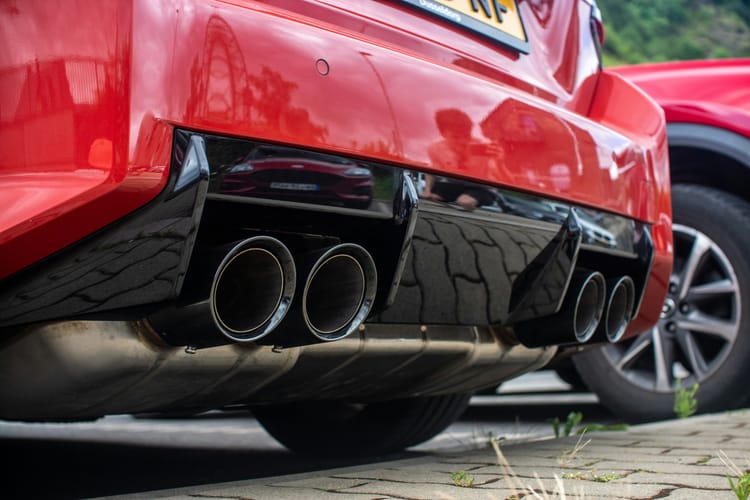From green AI to sustainable tech outcomes: Why CSOs and CTOs should grow engagement towards a shared vision

Digitisation – including AI – can help the world achieve net zero emissions, yet at the same time, concerns are growing over the environmental footprint of the data centres needed to power this shift.
In the midst of this complex and fast-moving dynamic, it’s imperative for Chief Sustainability Officers (CSOs) and Chief Technology Officers (CTOs) to work more closely together. At a recent webinar organised by CSO Futures, Lisa Wee and Arti Garg, respectively CSO and Chief Technologist at industrial software company AVEVA, shared their insights on what this collaboration may look like – and where challenges may arise.
Digital solutions can help the world decarbonise by as much as 20% – particularly supporting progress in hard-to-abate sectors. But the accelerating deployment of data centres is of growing concern to sustainability specialists. “We've certainly seen a growing emphasis on really understanding how we are being mindful in terms of integrating AI capabilities, because the build-out of the infrastructure associated with AI and the electricity demand that is coming from AI is certainly growing rapidly. But I think it's really important just to keep that in context: the tech sector probably emits about 1% of global emissions, versus some of the sectors that we work with on our side, that certainly are around 40% plus of global emissions,” reassured Wee at the beginning of the conversation.
Her role as CSO is essentially to ensure that the digital solutions deployed by AVEVA maximise sustainability opportunities for clients, without jeopardising the company’s own climate goals. She does that by thinking about the most efficient way to design software, working with the Green Software Foundation – and increasingly with Garg’s technology team.
Green software questionnaire and AI for all
She says this collaboration between CSO and CTO is absolutely critical, particularly for a software company. One of the first common initiatives was asking the product team to fill out an internal questionnaire and rate themselves in terms of green software maturity – an exercise in developing that original awareness around green coding.
But in the last year or so, she’s seen a shift in how employees approach technology: “When we expand to think about AI, it's actually not just about AI in our products, it's also AI across the organisation. We recently launched an AI for All initiative, as many other companies have. And one of the main questions that we got is, how will this affect our own climate commitments? That's one of those areas where it's really important to really work together on what that vision is.”
Some of the questions the two teams have asked themselves include: How do we bring AI into our products, but also across our organisation, while still meeting our commitments? What is the governance model around that? How will we keep ourselves accountable? What principles will we have? What metrics?
“It's really about having that shared vision and alignment at the top, that then allows us to make sure that we're using those really high-value use cases,” Wee explains.
The risks of working in silos
As Chief Technologist, Garg too has seen the conversation evolve around green tech: historically product teams were primarily looking at innovation from a profitability and competitiveness perspective, but now clients also ask questions about how tech can help them meet their sustainability targets.
She explained that collaboration with the sustainability team had two primary benefits: “One is certainly the expertise around how ESG targets are quantified, what are reporting requirements, how we should be thinking about these things from the standpoint of best practices within the industry. And then a lot of times it's also collaboration opportunities: because of the space that Lisa's team inhabits, they often see opportunities for us to really push our technologies to focus on use cases where we can look at how our solutions can help drive more sustainable outcomes.”
In her view, working in siloes would create both practical and existential risks. “We're relatively small teams, and we're designed to work across the company and drive people to think more expansively about how their work will evolve over time. So a very practical risk is that if we weren't aligned, worst case scenario, we'd be working at cross-purposes, but also just we'd be losing the opportunity to gain from working together,” Garg said.
And more broadly, she struggles to imagine what it would mean for a tech company to innovate in a way that wouldn’t take sustainability goals into consideration: “I would be really concerned about what that means for our future as a tech company.”
‘A fellow advocate’ for long-term thinking
This concern about the future is a boon to any Chief Sustainability Officer, as this position is tasked with future-proofing the organisation but often finds themselves having to focus on short-term results.
“I think what's been really great is to have a fellow advocate for thinking through longer term, where do we want to go, and helping me to understand what that will also mean from a sustainability standpoint,” Wee added.
Among other things, the CTO’s team helps the sustainability team understand new and upcoming technologies in more detail, which fuels into the CSO’s work on green software design principles. “I'm not in a technical role, so having somebody to help understand some of the gaps is absolutely key: What are we not doing? How credible is our methodology? What follow-up questions should we be asking of our teams? That's an area where we've sought the expertise of Arti and her team,” she noted.
Aligning the language to align the vision
Both Wee and Garg have seen a greater convergence between the innovation and the sustainability functions among their clients, too.
“I think that's based on the realisation that in industrial sectors, often the path to being more environmentally sustainable goes through digitisation and the ability to first better understand what the company is already doing, and then better apply intelligence and efficient decision-making around optimising operations for, say, resource inputs, which include energy or negative outputs, like carbon,” explained Garg.
AVEVA runs a network of Chief Sustainability Officers within its customer base, and in a recent poll, Wee was surprised to find out that almost all CSOs were engaging with their AI leads and digital teams. “There had been kind of this big surge of the CFO-CSO relationship under CSRD, and the next wave was sort of, how are you working with your CTO teams. And almost universally, there had been an increase in engagement,” she recalled.
However, she adds that the engagement has not yet reached the point of a shared roadmap: instead, the two teams are getting to know each other and learning each other’s language: climate target-setting, ESG acronyms and greenhouse gas accounting for the tech team, and the history and functioning of AI for the sustainability team.
Within AVEVA as a software firm, Garg explained that the sustainability team is more proficient in tech than the tech team in sustainability, so there has been a learning curve: “It's very rare that I will encounter a technologist who has no understanding at a high level of why environmental sustainability is important, but I certainly have encountered technologists who don't really understand how evolved of a discipline sustainability and ESG are. So it’s important to help upskill the tech community around sustainability, providing primers around language, making sure people are careful not to use language that would be greenwashing, etc.”
On her end, Wee has been through the process of learning more about different types of AI to support her sustainability work, but she warns that in such a fast-moving space, there’s a constant need to get educated on the next big wave: “Don't think that it's one and done, my friend!”







Member discussion